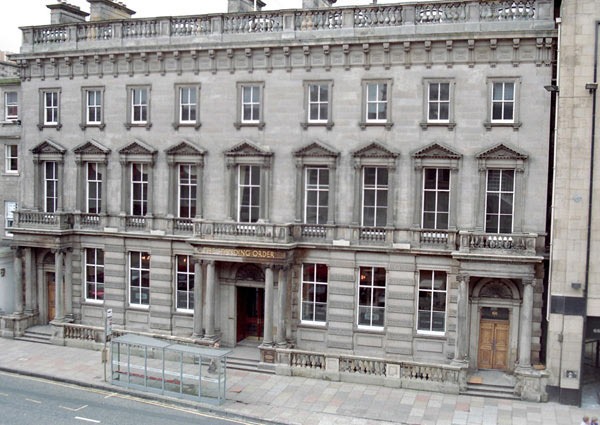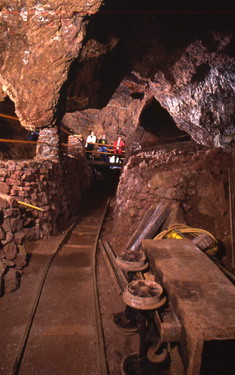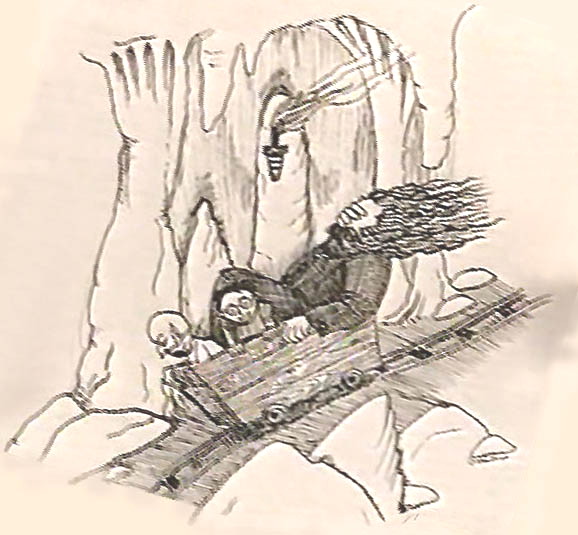Gringott
Le considerazioni dei fan inglesi
Gringotts sounds as though it may well have been inspired by either the Standing Order or the Dome, two massive and very grand former banks which are both now equally grand pubs, and which stand on George Street, Edinburgh, the next street north of Rose Street.

The Dome, George Street, Edinburgh, from wikimedia
Although neither is exactly white marble, they are made from pale sandstone and both have flights of steps up to grand double doors. Of the two, the Dome is probably the more likely model, as its steps are higher and more noticeable than the Standing Order's.

The Standing Order, George Street, Edinburgh, from the JD Wetherspoon website
[N.B. the two buildings are not as dramatically different in colour as they appear in these images, the Dome being less orangey than it looks here. Unfortunately I wasn't able to get good-enough-to-use shots of my own, showing the true colour, because you have to go there at about 5am to get shots of any buildings on George Street not almost-totally obscured by parked cars.]
The real mystery about Gringotts is how it manages to have stony caverns under it. If you dig down under central London you find, first, about 30ft of topsoil, then 450ft of clay, then 650ft of chalk, then a thin layer of sandstone, then another 200ft of clay and only then do you hit a level of real hard rock called the London Platform, about a quarter of a mile down. It's conceivable that Gringotts' caverns and vaults are in the chalk layer - but even so they'd have to be nearly two hundred yards below the surface, and they'd presumably have to be continuously pumped to stop the Thames from moving into them. However, we're told that the vaults are genuinely a long way down, and whilst "hundreds of miles" is clearly an exaggeration, a quarter of a mile could be true.
The rough stone passageway they enter from the main hall of the bank could be artificial, a buried building rather than a tunnel through the rock, and this built passage takes them down to the bedrock where the stalactitites start. But then you still have the problem that both caves and stalactites mainly form either in limestone areas or in volcanic rock, and there seem to be no limestone caves or volcanic chambers under central London. Maybe the caves are really somewhere else entirely, reached through wizardspace, or the little carts go so fast that they carry the passengers right outside London.
Then again, chalk is a form of limestone, and these caves, if they really are underneath an enclave off Charing Cross Road, are both close to and well below the Thames, and the Thames rises in limestone country and has very hard (that is, mineralized and lime-bearing) water. It may be that hard water seeping from the Thames and down through the chalk into artifically excavated and drained caves which lie well below the water table has formed these stalactites, and this would be doubly likely to happen if the caves are faced with limestone slabs or with concrete, which is capable of forming its own stalactites in the presence of seeping water, whether hard or not.
The real-world inspiration for the caverns under Gringotts, however, is clear. John Nettleship has convincingly identified them with Clearwell Caves, an ancient mine-working in a limestone area, set in the Forest of Dean about nine miles from Chepstow.

Abandoned wooden buggy in Clearwell Caves mine-working
"Since 1970 or before they have been a tourist attraction and of special interest to families around Christmas when children can meet Father Christmas in a rather magical setting. The Rowling children are sure to have been brought here, as were my own. Iron ore is transported in little trucks which run on very narrow rails through a maze of tunnels. The tunnels must be very long as they apparently extend to the basement of Gringotts bank, where the Goblins use the little wooden buggies to access the security vaults.
"You will see that Joanne’s own sketch corresponds quite well with the old buggy lying on its side in the recent photograph."

JK Rowling's own drawing of Gringotts' tunnels
Tratto dal blog di Claire


